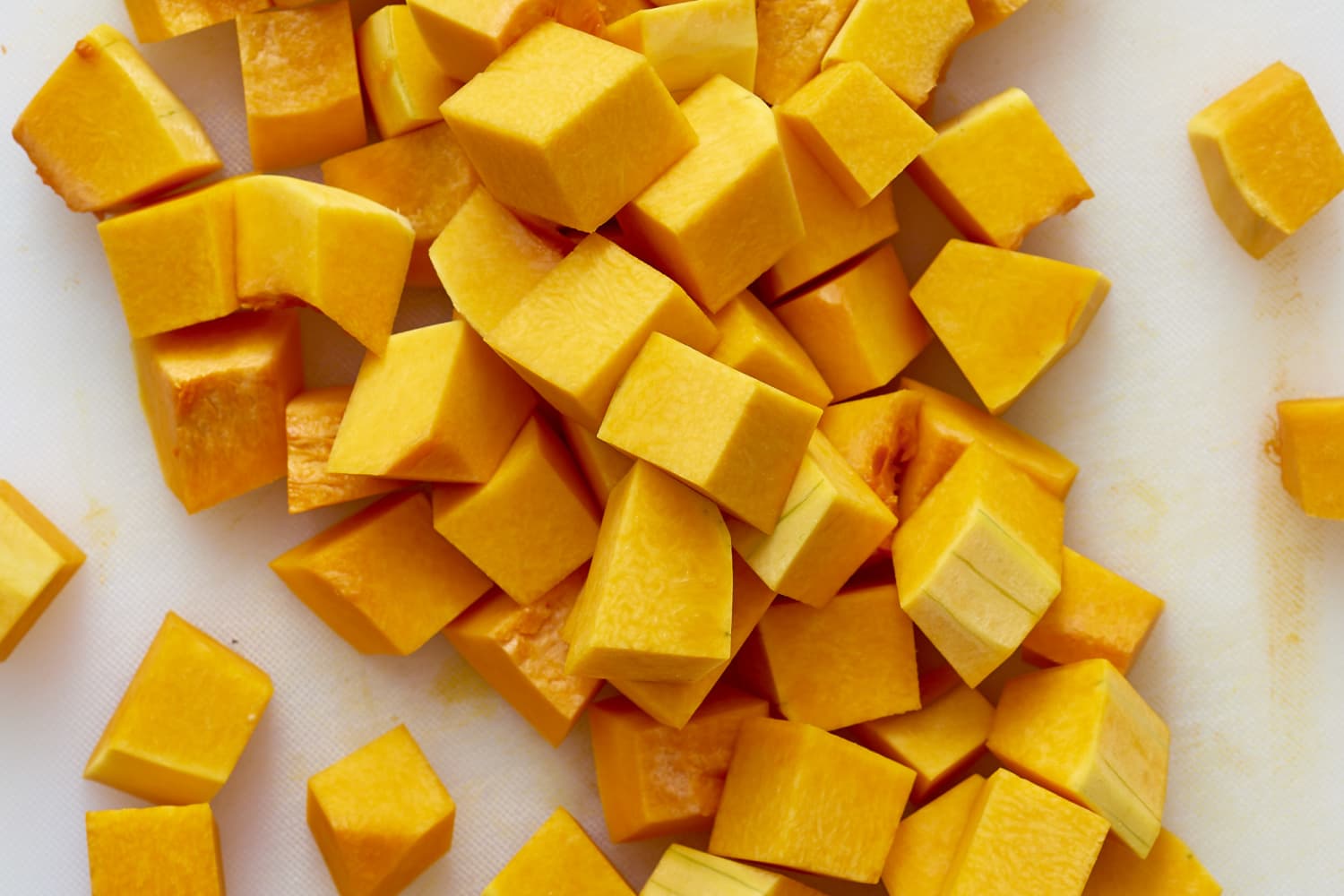We independently select these products—if you buy from one of our links, we may earn a commission. All prices were accurate at the time of publishing.
What kind of sorcery does it take to start with a bowling pin-shaped butternut squash and turn it into perfect, uniform slices and squares? You don’t need professional training or a magic wand — just a few basic kitchen tools and some know-how. Familiarize yourself with this method for how to cut and peel a butternut squash and you’ll be ready to tackle any squash-filled recipe winter throws your way.
The Best Tools for Cutting Butternut Squash
The most important thing when working with large, hard vegetables is to be sure that you have the right equipment. This means grabbing the best chef’s knife you own and making sure it’s recently sharpened. A flimsy or dull knife will make your life much harder and can also be dangerous since it can easily slip and cut you.
Your other important tool is a peeler, which should also be as sharp as possible. I recommend looking for peelers that have carbon steel blades as these hold a sharp edge longer than stainless steel. I like simple, cheap “Swiss” peelers. They’re usually under $5 each and last a long, long time.
How To Cut Butternut Squash
1. Slice off the ends first of the butternut squash.
Choose a large, heavy, sharp knife to pierce the skin. Once you have the knife wedged in, lean into the knife adding weight (make sure the tips of your fingers are way out of the way!) and let the knife slice through the sturdy flesh, removing the top and the bottom ends of the squash.
2. Peel the butternut squash.
Grab a sharp vegetable peeler that fits comfortably in your hand. I’ve given swivel, serrated, and ceramic peelers all a chance, but the one I come back to is Oxo’s Y-shaped peeler with a wide, ergonomic handle. It’s more comfortable to hold than the standard swivel and leaves a smooth surface on the vegetable, which I prefer over the small striations left by serrated ones. Peel up the neck of the squash and around the base until all of the peel has been removed.
3. Halve the squash and remove the seeds.
Peeling the squash will leave you with areas of the squash that are slightly more flat. Find a flattened side, then use your knife to slice the neck of the squash away from the base. The anatomy of these two parts is slightly different. You’ll see that the neck is a solid piece of squash, while the base is where the seeds reside. Scoop out the seeds and stringy pieces. You can rinse and roast these as you would pumpkin seeds.
4. Cut the butternut squash into rounds, slices, wedges, or cubes.
From here, consult your recipe to determine whether you need to cut the squash into rounds, slices, wedges, or cubes. If you are cutting it all the way down to cubes, the most efficient way to do it is to cut the neck into rounds, then cut those into sticks, and then turn and cut the sticks crosswise into cubes. Doing it this way means you’ll complete your chopping more quickly, and the cubes will be more uniform.
